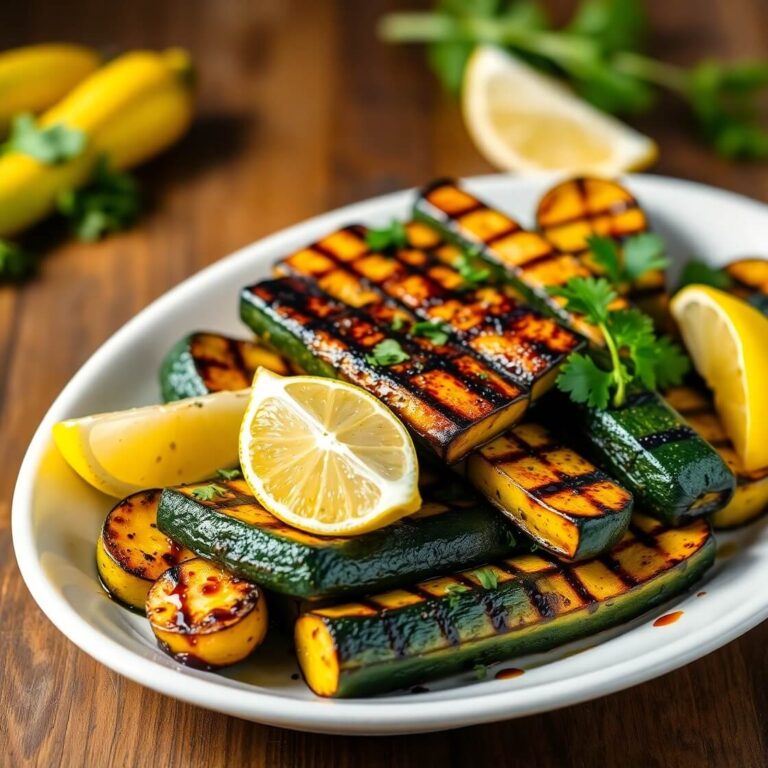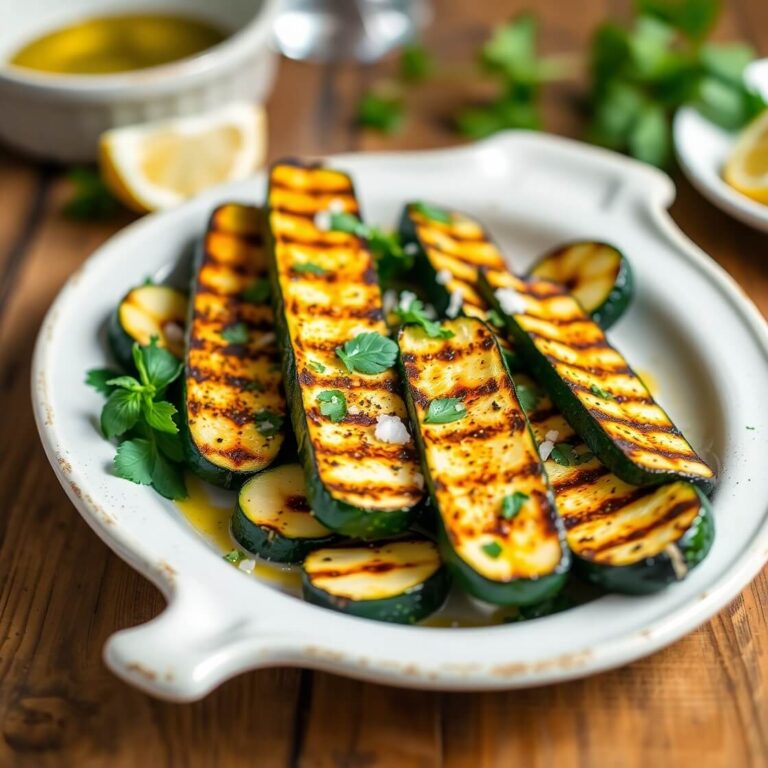Every summer, when tomatoes are at their peak—plump, sun-ripened, and bursting with flavor—I feel an irresistible urge to bottle that sunshine into something that lasts. That’s how this homemade tomato sauce recipe came to life.
One lazy Sunday afternoon, I found myself with an overflowing basket of heirloom tomatoes from the farmer’s market. Too many to eat fresh, but far too beautiful to let go to waste. I remembered how my grandmother used to simmer tomatoes all day on the stove, filling the kitchen with the kind of aroma that draws neighbors to your front door. I decided then and there to recreate that magic in my own way.
This tomato sauce isn’t just a basic pantry staple—it’s rich, robust, and deeply comforting. Whether you spoon it over pasta, layer it into lasagna, or freeze it for a future meal, it’s a little taste of summer you can enjoy all year round.
So if you’ve ever dreamed of skipping the store-bought jars and making your own sauce from scratch, you’re in the right place. Keep reading—you might just fall in love with the process.
Why I Love This Recipe
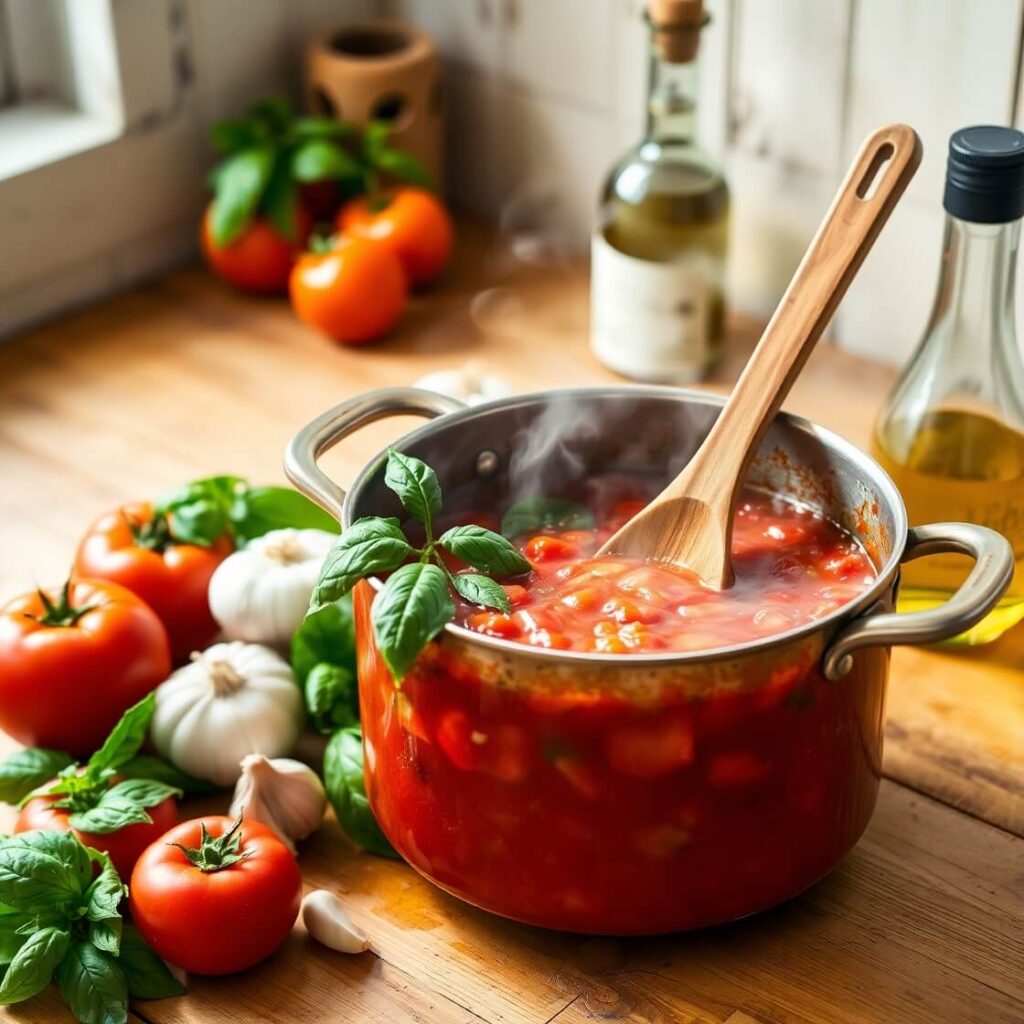
The first time I made this sauce, I was amazed at how the flavor developed as it simmered—starting bright and tangy, then slowly mellowing into something far more complex and comforting. That’s the magic of homemade tomato sauce.
One of the things I love most about this recipe is its flexibility. You can keep it simple with just tomatoes, garlic, and olive oil, or build in depth with onions, herbs, and a splash of red wine. Either way, the end result always feels luxurious—like something you’d be served in a rustic Italian kitchen.
It’s also incredibly practical. I make a double or triple batch and freeze it in portions. When I don’t have time to cook from scratch, it’s my go-to: dinner is halfway done with just one ladleful.
This recipe is also special because it’s not fussy. You don’t need fancy equipment, and you don’t need to peel every tomato (though I’ll show you a trick for that if you want to). It’s about slowing down, using what you have, and creating something honest and delicious.
If you’ve ever tasted a spoonful of sauce and felt instantly transported to a cozy trattoria, you’ll understand why I keep coming back to this recipe again and again.
Ingredients for Homemade Tomato Sauce
The secret to a great tomato sauce is starting with great ingredients. This recipe keeps it classic and lets the tomatoes shine, but you can always tweak it to suit your taste.
Before you start, here’s a breakdown of what you’ll need—and why each ingredient matters.
Fresh tomatoes – Look for ripe, juicy ones. Roma or plum tomatoes are ideal because they’re meaty and low in moisture, but if you have heirlooms or beefsteak, go ahead and use them. The fresher, the better.
Olive oil – Use a good quality extra virgin olive oil. It forms the base of the sauce and adds a smooth richness.
Garlic – Crushed or minced, garlic brings out the natural sweetness of the tomatoes and adds that irresistible aroma.
Onion – Finely chopped onions give body and a mellow sweetness to the sauce.
Salt – Essential for drawing out the flavor of the tomatoes.
Black pepper – Adds a subtle bite and balances the acidity.
Fresh basil (optional) – Basil brings brightness and a touch of sweetness. Stir it in at the end for maximum flavor.
Red pepper flakes (optional) – For a little heat, if you like your sauce with a gentle kick.
Tomato paste (optional) – If your tomatoes are a bit watery or you want a thicker sauce, a tablespoon or two of tomato paste will do the trick.
Red wine (optional) – Just a splash adds a lovely depth. Choose something dry and drinkable.
This isn’t the kind of recipe where you have to measure every ingredient to the gram. Trust your instincts, taste as you go, and adjust to your liking.
How Much Time Will You Need
The beauty of this recipe is that it doesn’t require hours of prep—but it does benefit from a slow simmer.
- Prep time: 15–20 minutes
- Cook time: 45–60 minutes (longer for deeper flavor)
- Total time: About 1 hour 15 minutes
If you’re short on time, you can simmer the sauce for 30 minutes and still have something delicious. But if you’ve got the time to let it gently bubble away, you’ll be rewarded with a more developed, velvety sauce.
How to Make This Homemade Tomato Sauce
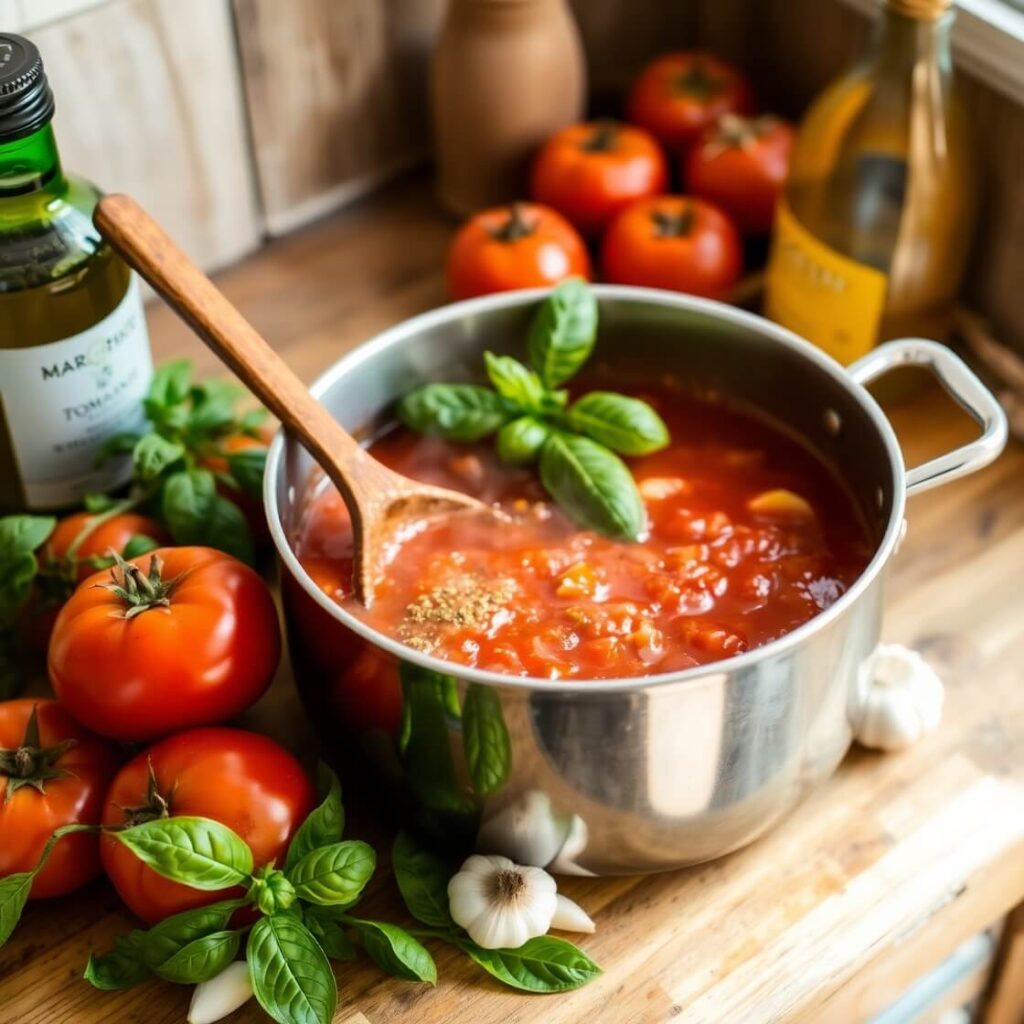
This method is straightforward and incredibly forgiving. Here’s how to bring it all together, one step at a time:
Step – 1: Prepare the tomatoes
If you want a smooth sauce, blanch the tomatoes first. Bring a pot of water to a boil and score a small “X” at the bottom of each tomato. Drop them into the boiling water for 30–60 seconds, then transfer to an ice bath. The skins will peel right off.
If you don’t mind a slightly chunky texture, skip the peeling. Just core and chop the tomatoes into rough chunks.
Step – 2: Sauté the aromatics
In a large, heavy-bottomed pot or Dutch oven, heat the olive oil over medium heat. Add the chopped onion and sauté until soft and translucent—about 5–7 minutes. Add the garlic and cook for another 1–2 minutes, just until fragrant. Don’t let it burn.
Step – 3: Add the tomatoes
Add your prepared tomatoes to the pot along with a generous pinch of salt and pepper. Stir everything together and bring it to a gentle simmer.
If you’re using tomato paste, stir it in now to thicken the sauce.
Step – 4: Let it simmer
This is where the magic happens. Lower the heat to maintain a gentle bubble and let the sauce cook uncovered for at least 45 minutes, stirring occasionally.
The longer it simmers, the richer it becomes. If it starts to look too thick, add a splash of water or wine. If it’s too thin, just keep simmering.
Step – 5: Blend (optional)
Once the sauce is cooked down and flavorful, you can leave it chunky or blend it for a smoother consistency. Use an immersion blender directly in the pot, or let the sauce cool slightly before transferring it to a blender.
Step – 6: Add herbs and taste
Stir in torn fresh basil leaves and taste for seasoning. Add more salt, pepper, or a pinch of sugar if the tomatoes are very acidic.
That’s it. Your homemade tomato sauce is ready to use, freeze, or serve.
Substitutions
Don’t have fresh tomatoes? You can absolutely use canned—just make sure they’re good quality. San Marzano tomatoes are a favorite among home cooks and chefs alike.
Out of onion? Use shallots or even leeks for a milder flavor.
Want a richer taste? Swap in butter for some of the olive oil. It’ll give your sauce a silky finish.
If you’re avoiding garlic, you can leave it out entirely or add a dash of garlic-infused oil for a more subtle touch.
Vegetarian? This recipe already is. Want to make it vegan? Just stick with olive oil and skip the butter option.
The flexibility here is what makes this sauce a kitchen essential. You can adjust it to fit your pantry—and your mood.
Best Side Dish of Homemade Tomato Sauce
This sauce is so versatile, it pairs beautifully with a variety of sides. Here are a few favorite combinations to make the most of it:
Fresh Pasta – There’s nothing better than tossing this sauce with homemade or fresh store-bought pasta. Add a sprinkle of Parmesan and you’re set.
Garlic Bread – Use it as a dipping sauce for crusty, buttery garlic bread. Simple, satisfying, and addictive.
Zucchini Noodles (Zoodles) – If you’re watching carbs, this is a fantastic low-calorie pairing that still feels hearty and delicious.
Serving and Presentation Tips
There’s something deeply satisfying about presenting a dish that not only tastes incredible but looks just as inviting. This homemade tomato sauce, with its rich color and velvety texture, deserves a little love in the presentation department—especially if you’re serving guests or just want to elevate your weeknight dinner.
Try ladling it generously over a pile of fresh pasta and topping it with a few fresh basil leaves for color. A swirl of high-quality olive oil and a sprinkle of freshly grated Parmesan cheese never hurts either.
If you’re serving it in a bowl for dipping (hello, garlic bread), use a shallow dish or small cast iron skillet and finish with cracked black pepper and a basil garnish.
For casual entertaining, I like pouring the sauce into a ceramic jar or rustic serving bowl—it looks earthy and homemade in the best way. It’s not just about the food—it’s about the experience, and these little touches make it all feel special.
Tips and Tricks to Make This Recipe Even Better
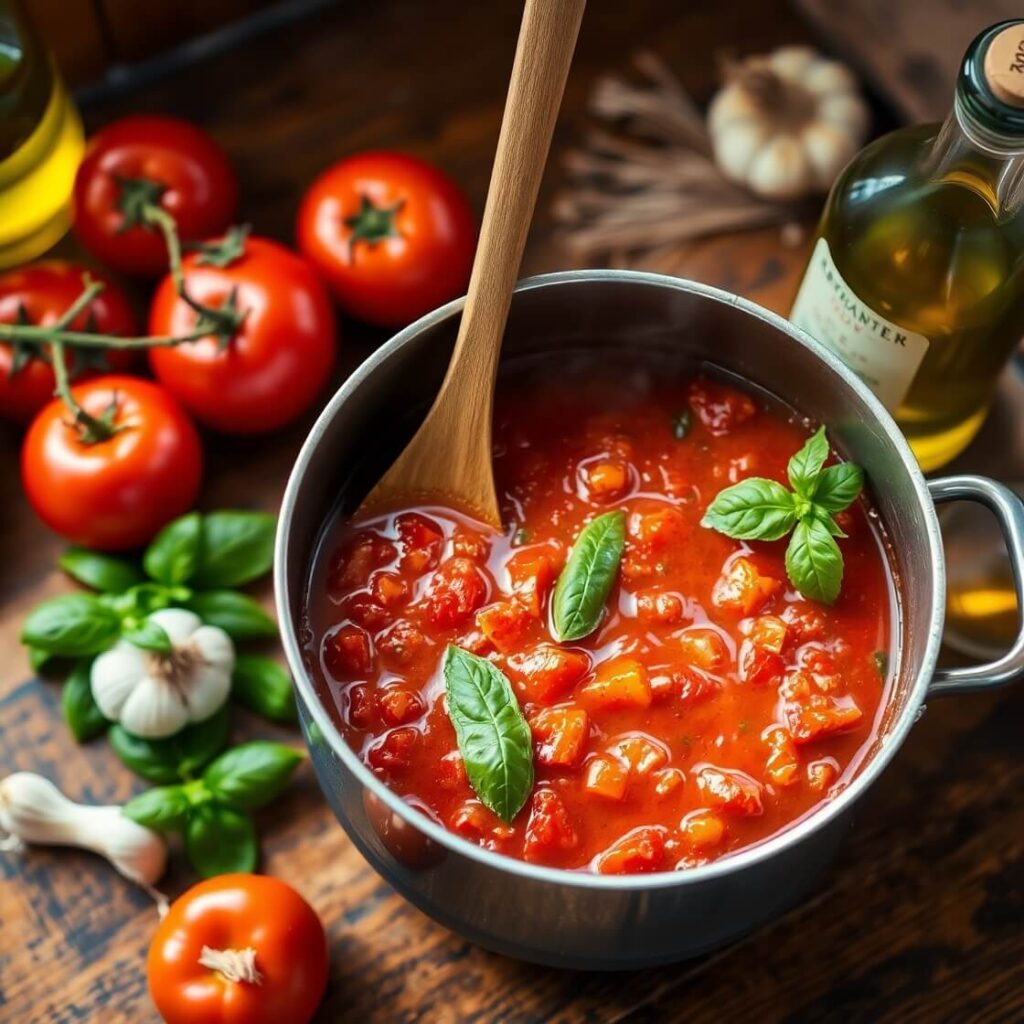
The magic of this sauce lies in the small decisions you make along the way. Here are some of my go-to tips for getting the most flavor with the least fuss:
- Use a variety of tomatoes: Mixing different types—like plum, heirloom, and cherry—can deepen the flavor profile. Each one brings its own balance of sweetness and acidity.
- Don’t rush the simmer: Low and slow is key. The longer it cooks, the more the flavors concentrate. If you’ve got an hour, take it.
- Deglaze for depth: After sautéing your aromatics, splash in a bit of wine or stock to lift the brown bits from the pan. That’s where the flavor lives.
- Add a pinch of sugar: Especially if your tomatoes are more tart than sweet, a pinch of sugar helps round out the sauce.
- Finish with butter: Swirl in a tablespoon of butter at the end for a smooth, luxurious finish. It balances the acidity beautifully.
- Let it rest: Like chili or stew, tomato sauce actually tastes better after it’s had a bit of time to sit. The flavors continue to meld.
With a little attention to detail, your sauce will go from good to unforgettable.
Common Mistakes to Avoid
Even though this recipe is forgiving, there are a few pitfalls that can throw off the flavor or texture. Here’s what to watch for:
- Using underripe or flavorless tomatoes: The sauce is only as good as your base ingredient. If your tomatoes aren’t great, the sauce won’t be either.
- Skipping the seasoning early on: Salt helps draw out the juices and flavors. Don’t wait until the end—season in layers.
- Burning the garlic: This happens fast and can turn the whole sauce bitter. Cook it low and slow, and watch it closely.
- Too much water: If your tomatoes are especially juicy, simmer with the lid off to allow excess moisture to evaporate.
- Over-blending: If you want a bit of texture, pulse your immersion blender or use a potato masher. Blending too long can make the sauce gummy.
Avoiding these missteps will help your sauce turn out silky, balanced, and beautifully flavorful every time.
How to Store It
One of my favorite things about this tomato sauce is how well it stores. I always make extra so I have it on hand when I need a quick, comforting meal.
In the fridge: Store in an airtight container or glass jar for up to 5 days. Let it cool completely before sealing to avoid condensation inside the jar.
In the freezer: Spoon cooled sauce into freezer-safe containers or silicone freezer trays (perfect for portioning). It’ll keep for 3 months or more. Just thaw overnight in the fridge or reheat gently in a saucepan.
Canning (for long-term storage): If you’re into preserving, this sauce can be canned using a water bath method. Just be sure to follow proper canning safety guidelines—especially around acidity.
Homemade tomato sauce really is the gift that keeps on giving.
FAQ
Can I use canned tomatoes instead of fresh?
Yes! Canned whole peeled tomatoes (preferably San Marzano) work beautifully when fresh tomatoes aren’t in season.
Do I have to peel the tomatoes?
Not at all. Peeling gives a smoother sauce, but if you don’t mind a bit of texture, you can leave the skins on. The immersion blender helps break them down.
Can I make this sauce spicy?
Absolutely. Add red pepper flakes to the garlic and onion step for a bit of heat, or toss in a chopped chili.
How can I thicken my sauce?
Simmer longer to reduce the liquid naturally. You can also stir in a tablespoon or two of tomato paste if needed.
Is this sauce vegan or vegetarian?
Yes! As long as you use olive oil (not butter) and skip cheese toppings, it’s naturally vegan and vegetarian.
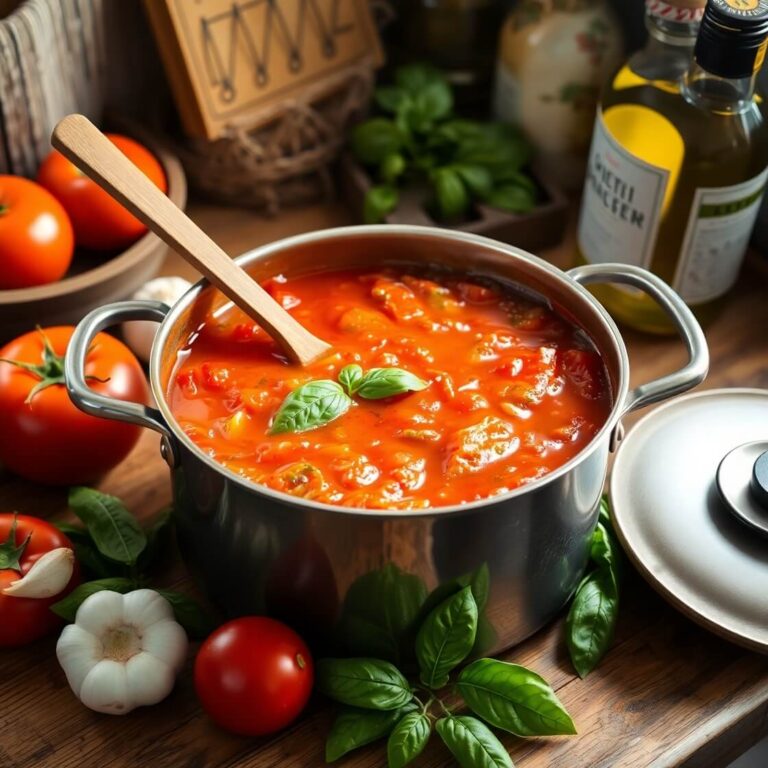
Homemade Tomato Sauce
Capture the fresh taste of summer in every spoonful with this rich, slow-simmered homemade tomato sauce. Perfect for pasta, pizza, dipping, or freezing for later, this sauce is made with simple ingredients and a whole lot of flavor. Whether you’re new to making sauces from scratch or just looking for a better alternative to jarred varieties, this recipe is the one you’ll come back to again and again. With just a few pantry staples and a little simmer time, you’ll have a comforting, versatile sauce that tastes like it came straight out of a farmhouse kitchen in Italy.
- Total Time: 1 hour 20 minutes
- Yield: 6
Ingredients
- 3 lbs fresh tomatoes (Roma, plum, or a mix), chopped
- 2 tbsp extra virgin olive oil
- 1 medium yellow onion, finely chopped
- 4 garlic cloves, minced
- Salt, to taste
- Black pepper, to taste
- 1–2 tbsp tomato paste (optional, for thickness)
- Handful of fresh basil, torn (optional)
- Pinch of red pepper flakes (optional)
- Splash of red wine (optional, for depth)
Instructions
- Heat olive oil in a heavy-bottomed pot over medium heat. Add chopped onion and sauté until translucent.
- Stir in garlic and cook for 1–2 minutes until fragrant.
- Add the chopped tomatoes, salt, and pepper. Bring to a simmer.
- If using, stir in tomato paste and red wine.
- Simmer uncovered for 45–60 minutes, stirring occasionally.
- Use an immersion blender if you prefer a smoother sauce.
- Stir in basil at the end and adjust seasoning as needed.
- Let cool before storing or serving.
Notes
- If your tomatoes are very watery, let the sauce simmer longer to reduce.
- For a richer taste, finish with a tablespoon of butter.
- This sauce freezes beautifully—make extra and save for busy nights.
- Prep Time: 20 minutes
- Cook Time: 1 hour
- Category: Sauce
- Method: Simmering
- Cuisine: Italian
- Diet: Vegan
Nutrition
- Serving Size: 6
- Calories: 85
- Sugar: 5g
- Sodium: 180mg
- Fat: 6g
- Saturated Fat: 1g
- Unsaturated Fat: 5g
- Trans Fat: 0g
- Carbohydrates: 7g
- Fiber: 2g
- Protein: 1g
- Cholesterol: 0mg






